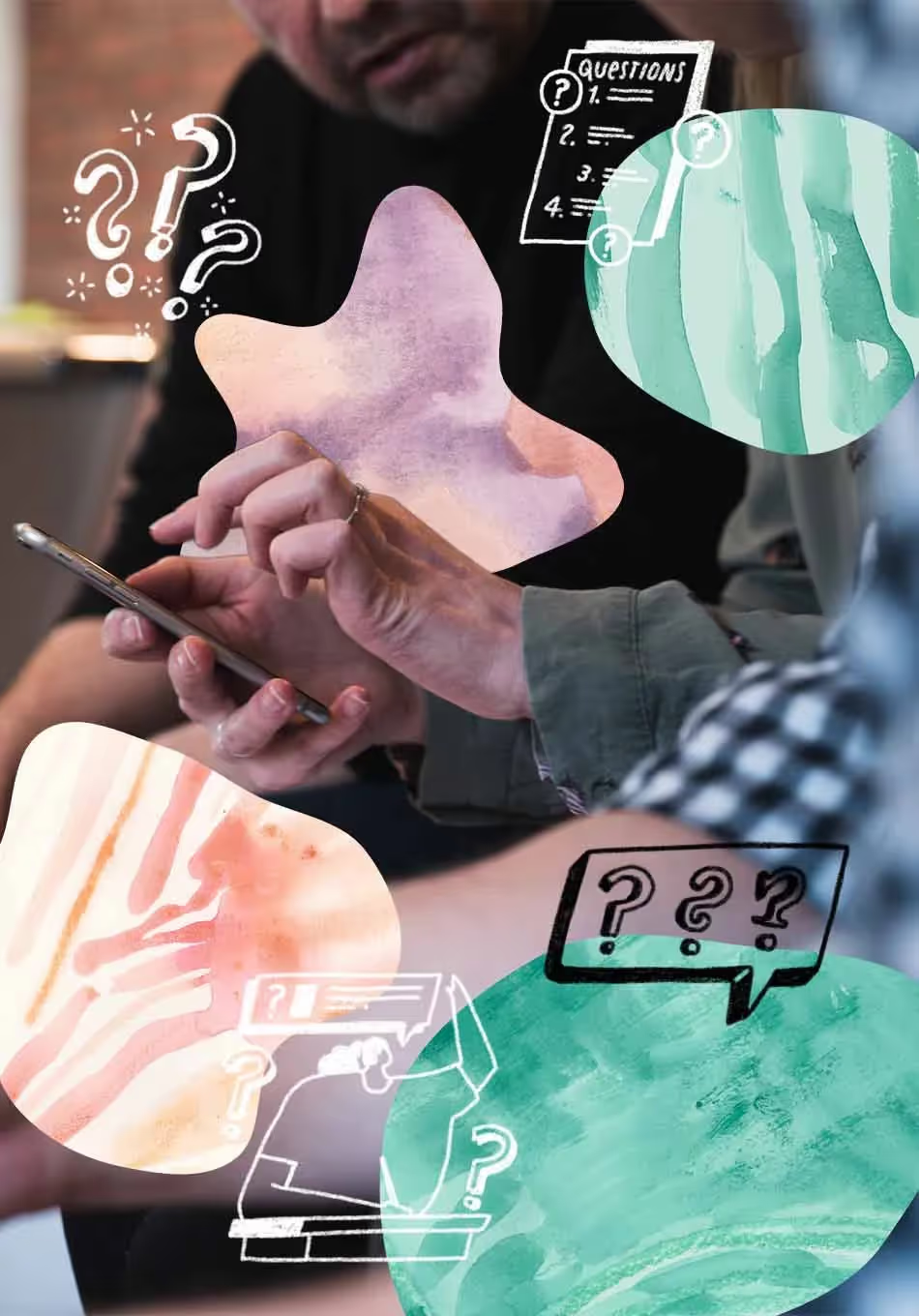Note: We're been re-listening some of our most popular Awkward Silences episodes, to keep the evergreen advice fresh in our minds. The insights in this article were taken from Ep #38 - Accessibility, User Research, and Inclusive Design with Cat Noone, CEO of Stark, which was released on April 10, 2020.
We need to change the narrative about accessibility and compliance. So says Cat Noone: mother, self-professed bookworm, cookie connoisseur, and CEO of Stark—a suite of integrated accessibility tools for product and dev teams.
When Cat stopped by the Awkward Silences podcast last year, she explained that accessibility and compliance are both side effects of inclusive design.
“When you create an inclusive experience, that puts you on a path to being accessible. And when you’re accessible, you’re compliant with regulations.”
Cat’s passion for inclusive design is contagious, and she doesn’t pull any punches.
“There’s no excuse at this point why we can’t do what needs to be done to make our work—whether it’s a website, a mobile OS, or an app—accessible.”
While many companies still struggle to deliver inclusive designs, Cat is driving toward a future where inclusive design is part of the package from the start—like testing coverage of your code base and mobile responsiveness.
As the CEO of Stark, Cat helps companies build products that are accessible, ethical, and inclusive. Stark’s easy-to-use contrast checker and colorblind simulator empower product teams to address folks with visual impairments as part of their development workflow. But, as Cat explained, those tools are really just entry points into the larger conversation about the power of inclusive design.

Why do companies struggle with accessibility?
Accessibility is a big topic. It’s broad, complex, and comes with some very real risks that put a pretty big burden on software companies. A product that is inaccessible and/or noncompliant can result in lawsuits and financial liabilities. Moreover, designs that exclude people are often the result of a lack of due diligence and even outright bias; shipping those products puts companies in danger of public exposure and backlash.
Of course, many companies realize this and want to properly execute on accessibility. The problem is that most folks just don’t know where to start. As Cat pointed out, it can be a challenge just to decipher the regulations:
“It’s ironic that the language about how to abide by accessibility regulations is, itself, inaccessible.”
Achieving compliance is also expensive (although not nearly as expensive as having to retrofit work that wasn’t done right in the beginning).
But none of the excuses about added complexity, initial expenses, and uncertainty around unfamiliar topics change the fact that it’s in a company’s best interest to incorporate inclusive practices into their research and design from the very beginning.
Apart from improving compliance and avoiding lawsuits, baking inclusive practices into your research also addresses the very real frustration of the real people using products.
“It’s important to recognize that people who are negatively impacted by a lack of accessibility are just really sick of this shit. And I can understand … it’s hard to justify relaunching reusable space rockets while 99% of the internet is still inaccessible.”
So, what is accessibility exactly?
Let’s backtrack a moment. What do we mean when we talk about accessible design?
Many people tend to think of accessibility as something that focuses on design details like color and contrast, or features like subtitles and alt text
These are, indeed, important parts of accessible design. But zeroing in on font size, for example, can make us lose sight of the bigger picture.
Inclusive research and design doesn’t just course correct—they create accessibility by including diverse perspectives right from the start. Cat takes this big-picture perspective to drive home just how universally important it is to take an inclusive approach to design. Because no one wants to feel like an afterthought.
Accessibility affects everything and everyone.
Accessibility is critical for websites, software, and mobile apps. And in both digital spaces and the “real world”, accessible products ultimately benefit everyone—not just the people who need them most often. Take the curb cuts designed to accommodate wheelchairs, for example: Making sidewalks more accessible for folks in wheelchairs also helps people pushing baby strollers or pulling roller bags.
Accessibility is very contextual.
Accessibility needs vary from person to person—and from context to context. It’s not a yes/no or on/off kind of thing. For example, a person with a broken arm or leg will have temporary accessibility needs. And if that person is suddenly unable to use your product, you might lose that customer. Worse, that customer might share their frustration with others, and you could wind up in a hole you dug for yourself, with no accessible ramp out.. The truth is, we are all just temporarily abled.
Accessibility is always changing.
“It’s hard to be an expert on something that’s continually changing. People need to understand that accessibility isn’t a one-time flat deal that you never have to touch again.”
People’s needs change, the technology changes, regulations change. Keeping up with accessibility means being proactive and constantly (re)evaluating how you do your research and how your design needs to evolve to deliver what real people need.
In an article for InVision, Cat put it like this:
“Design isn’t just pixel pushing. It’s servicing all people, solving problems that meet the needs of the business, and ensuring that experiences are wonderful for as many people as possible.”
4 tips for getting started
Cat shared some great, no-excuses advice for teams that want to put their best foot forward, but aren’t sure where to begin.

1. Forget the “aesthetic/accessibility paradox.” That is not a thing.
Product teams often fall into the trap of believing that great design and accessibility are mutually exclusive. Cat’s not buying it. “It’s our job to make sure what we’re building looks good and can be used by everyone,” she says. “This is not a novel thing. This is the job. Always has been, and nothing has changed.”
2. Do your due diligence in the research phase.
Don’t wait until you’ve started building to think about inclusivity. That’s too late. Start early in the process by soliciting input from a wide variety of people—people with different levels of ability (physical and neurological, permanent and temporary), but also people of different genders and ages, and folks from diverse ethnic and socioeconomic backgrounds. Think of these people as your extended team, and learn to truly appreciate the value they bring to the table.
3. Test with individuals who cover a wide spectrum of abilities and disabilities.
In a piece she wrote for TechCrunch, Cat points out that data isn’t abstract. It has a direct impact on people’s lives. Because of this, she says we’re long overdue for a new, fairer data framework that can ensure data is collected and managed in ways that account for people with disabilities . As it is, 56% of organizations fail to routinely test their digital products among people with disabilities. Indeed, among the respondents to our own State of User Research 2021 report, only 49% of researchers said they make a tangible effort to recruit a diverse pool of participants. Those numbers leave a lot of room for improvement.
4. Break accessibility down into bite-sized tasks.
Whether you’re starting from scratch or retrofitting, it’s important to break things down into small, manageable tasks so that your accessibility effort doesn’t become overwhelming for anyone on the project. It really isn’t possible to address everything at once, and you’ll set yourself up for failure by trying to do some. Focus on one area at a time. Maybe start with color in one sprint, and then tackle typography in the next sprint, for example. Plan to revisit your efforts regularly to iterate and make continuous improvements.
The bottom line is that early-stage companies should take advantage of the opportunity to integrate accessibility principles and inclusive design from the very start. Later-stage companies who don’t have that opportunity should focus on doing an in-depth self assessment to identify where they come up short, and then work to rectify those issues in a consistent way.
The future looks bright
While the challenges of accessibility and compliance are very real, Cat is extremely optimistic about where we’re headed. She is excited about the conversations that are happening, and believes we’re strong enough to deal with the uphill battle.
“We have enough people to push everyone forward up the hill. And when we get up the hill, we need to turn around and pull people up. No one is an expert on this. It’s a continual learning process. We need to allow people to make mistakes, and learn from each other.”
Cat issued a challenge to all designers to invoke change and rally around inclusive user research and design. She asked designers to educate themselves, always ask who is excluded from a design, and take responsibility for educating others. If more designers are willing to step up and lead the charge on making inclusive design the standard instead of the exception, Cat believes we can leave the world a little better than we found it.
Listen to the full episode or read the transcript for more from Cat:
Header image courtesy of Freepik



















